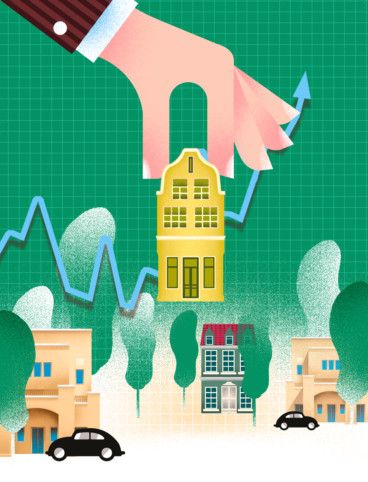Like the rest of Saudi life, the real estate market is going through a profound and transformational change. The old certainties are being replaced, and new economic forces — global, regional and national — are changing forever the property environment.
The transformation underway involves a makeover of the Saudi citizen, making them entrepreneurial self-starters in an economy typically dependent on a traditional model. The appeal is not limited to economic policies, but also a strong social movement wherein policymakers are promising to improve the quality of life.
The new Saudi will expect to live in a very different environment to the one that has conditioned the Kingdom for the past 80 years. The shift to modernity in Saudi terms involves a change of mindset certainly, but also necessitates a change in the physical environment wherein stand-alone buildings and big villa residential stock are still a clear majority and at a ratio significantly higher than in neighbouring Gulf countries.
Saudi Arabia’s challenge remains to deliver Class A assets in line with the changing nature of the market, in both commercial and residential spaces. Other hubs in the region have responded to similar challenges by moving increasingly to mixed-use developments in high quality constructions with good infrastructure. Projects like Dubai International Financial Centre, the Downtown area, or Abu Dhabi’s Yas Island, could provide some signposts for Saudi Arabia to follow.
Further out, the London King’s Cross redevelopment or the huge Hudson Yards project in Manhattan are examples of the kind of integrated work-lifestyle hubs aspirational young people are choosing in the West.
Placemaking is crucial to the new Saudi real estate proposition. It helps developers enhance the value of their assets and generates a revenue stream to offset the development and operational costs. Amenities such as digital connectivity, restaurants, cafés, fitness facilities, events spaces, and easy parking — all within the context of a residential and commercial hub — generate additional revenue for developers ... and are exactly what the new generation of Saudi citizen wants.
Mixed-use developments help create real communities where none existed before, and urban planners see them as the answer to 21st century city living. At the moment, a city like Riyadh has hundreds of square kilometres of housing, but few neighbourhoods. The “placemakers” will help policymakers create such urban magnets.
Experts now believe that the dominant trends in commercial and residential real estate in Saudi Arabia’s big cities are low-rise, mixed-use quality projects that create communities offering lifestyle services. Master-developers are beginning to realise that they need to incorporate community features into their mixed-use developments at an early stage. If not, the impact will be felt for years to come as the industry fails to satisfy market needs, and the aspirations of the Vision 2030 generation go unrealised.
For developers and asset managers, the trends present vibrant opportunities. The burgeoning market is underpinned by three factors: high population growth, steady physical expansion of the urban area, and rapid changes in consumer behaviour. This is creating exciting new opportunities for lifestyle retail, restaurants, events, and mixed-use developments. It is also driving rapid obsolescence of property locations and concepts.
Property owners in must be adaptable, be agile to the market conditions and invest in their assets to maintain long-term value and relevance. Even with trophy assets such as the Granada Centre, Kingdom Centre and the Faisaliah District, owners are investing in upgrades and expansions to meet the market, even though they are not much more than 15 years old.
Elsewhere in Saudi Arabia, we see many examples of assets which were once prime but are now trading at 50 per cent discounts to prime rents. The most important job of asset managers in the Kingdom is to plan and deliver life cycle maintenance and improvements that secure and enhance value for the owners.
The pace of change in Saudi Arabia is accelerating at an unprecedented rate under the stimulus of the Vision 2030 diversification strategy. The generation of Saudi citizens coming of age now has different lifestyles and employment and leisure expectations. They want communities and neighbourhoods, not compounds and office blocks.
The real estate industry will play an essential role in that transformation, but it too has to adapt to the new environment and give citizens the experiences they want.
Waleed Alesia is CEO of Raza, the property asset management arm of the Saudi Public Pension Agency.













